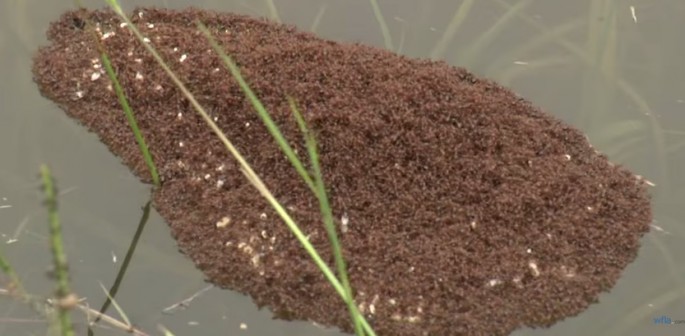South Carolina is now ravaged with flood waters after the storm that was termed as a one in 1,000 year event where local media captured how animals survive a natural disaster, particularly the smallest creatures, washed up into mounds of floating fire ants.
The flooding caused widespread devastation across the state but this invasive species of fire ant populations have found a clever way to survive.
A video captured by a local TV station captured thousands of those ants that appear to be piled on top of each other forming a floating mound, spotted in Dorchester County, South Carolina.
This invasive species of red fire ants can cause a serious, painful bite, resulting in small blisters in victims, accompanied with a burning, itchy sensation.
However, this is not the first time that these fire ants are observed in massive floating "islands". Last May, a deadly flooding in Texas also forced these fire ants to evacuate in mounds as they enter into flooded yards.
The strange and uncanny world of ants is revealed with this remarkable survival technique as fire ants have been using this strategy during evolution to escape the ravages of nature and also for migration routes, says entomologist Tim Davis from the Clemson University.
These piles of ants can accumulate in less than two minutes, were they can link their bodies together to form an assemblage of floating rafts. Davis adds that when water rises, the fire ants grab hold onto each other where they can last for about several days until their body raft reaches higher ground.
According to engineering professor David Hu and Nathan J. Mlot from the Georgia Institute of Technology, these ants are also water resistant due to a special oil that is secreted, covering their shells, allowing them to attach to smooth surfaces.
These floating ant rafts are not so uncommon the engineers said, as they are also found indoors following a flooding event.
A precautionary measure would be to avoid and stay out of flood waters, and avoid at all costs these ant masses. Davis says, if one of these ant rafts comes into close contact or if anyone tries to break apart these ant rafts, the ants will most likely disperse and crawl up to that person.



























